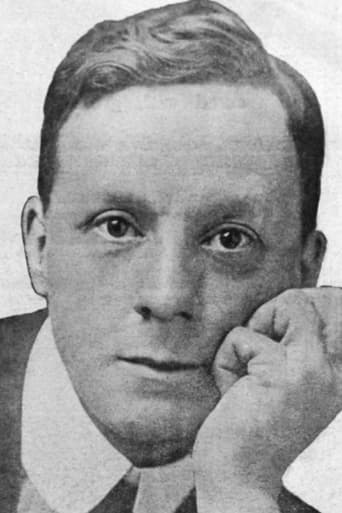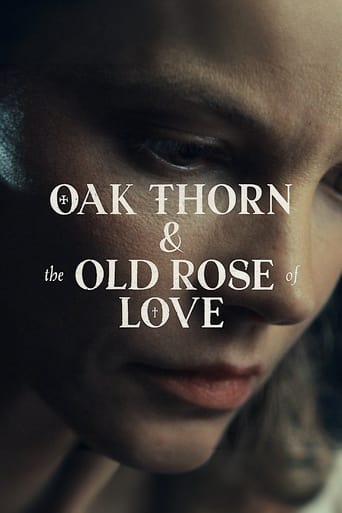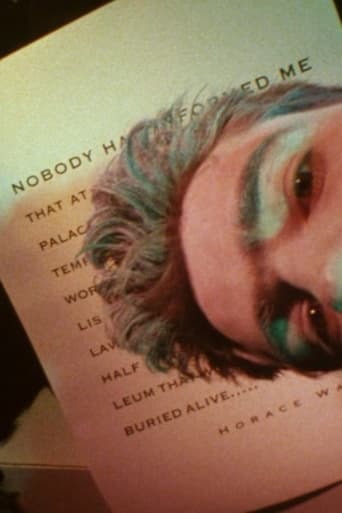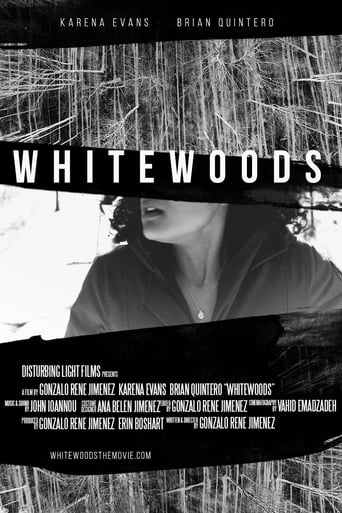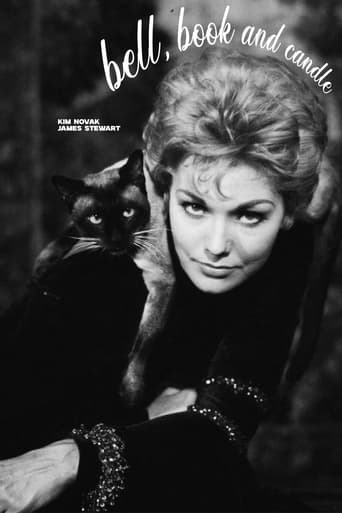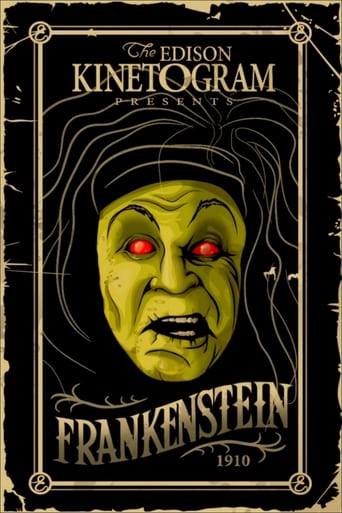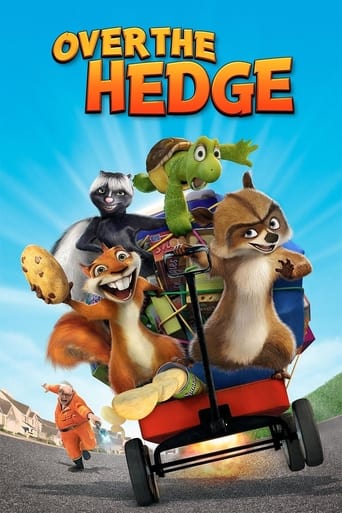
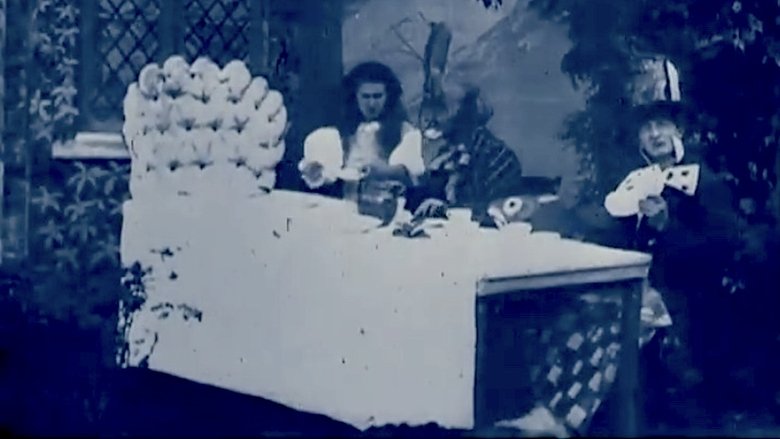
Alice in Wonderland (1903)
This is the first movie version of the famous story. Alice dozes in a garden, awakened by a dithering white rabbit in waistcoat with pocket watch. She follows him down a hole and finds herself in a hall of many doors.
Watch Trailer
Cast


Similar titles
Reviews
This short piece, the first ever film adaptation of the Lewis Carroll story, has some nice costumes and clever visuals. Since it is only eight minutes, there is little time to develop anything. We have the scenes with the mushrooms and the drink that make Alice small, then big. We have the baby turning into a pig. We meet the White Rabbit, the Mad Hatter and the March Hare. a full deck of playing cards, and the Queen of Hearts. If you know the story, this is fine. Otherwise it is practice for future cinema. The piece I viewed was restored from badly damaged film. The beginning is nearly unwatchable, but as we get farther in, it gets better.
For 1903, this is a rather long and elaborate fiction film, although exhibitors could also buy the scenes separately. This was when exhibitors still retained editorial control and the final appearance of the films they screened; however, by 1903, producers were gaining more control over this, and this film is a reflection of that. By then, story films were becoming more popular than the single shot-scene attractions and novelties of cinema's beginnings. "A Trip to the Moon" (1902) and "The Great Train Robbery" (1903) remain the most popular examples of the new story film.Hepworth's "Alice in Wonderland" is said to have been originally 800 feet and, perhaps, as long as 12 minutes, with 16 scenes. The print available today suffers severe negative decomposition and lasts about 8 minutes. That's longer than most films from then. "Alice in Wonderland", however, isn't so much a story film in the sense of continuity and self-contained narrative, but, rather, is a series of images, loosely connected, to illustrate selected parts of Lewis Carroll's novel. They're based on those by John Tenniel. If one were unfamiliar with the novel, this film would make little sense; its narrative isn't self-contained. The filmmakers assume audience foreknowledge and relied upon lecturers to explain the film at showings with the aid of Hepworth's catalogue description of it. In the tableaux style, the film's title cards describe the action before we see it, and tell some of the narrative that isn't shown. Dissolves are often used as a transition, too, which was quite common back then, since Georges Méliès did it.Regarding the titles, one thing I found remarkable about this film is that the title to the film overlays the opening image, via multiple-exposure photography. I've rarely seen this before the 1920s, although an earlier British film, "Scrooge; or Marley's Ghost" (1901), which was also selected images to accompany a popular novel, featured a similar overlap of images and title cards.The rest of the picture is rather unremarkable. There are a few cutaways and insert medium shots and match-on-action cuts, but some are awkward and primitive. There's also a reverse-angle shot when Alice is trapped in the rabbit house. The multiple-exposure (or superimposition) trick photography was nothing new, except for the aforementioned use. Prints were originally toned. The film is notable as a comparatively large production for its time, but there were more advanced story films then, which had self-contained narratives and that invented continuity editing. One of these would by Hepworth's 1905 film "Rescued by Rover".
Cecil Hepworth is a vitally important figure in Britain's early cinema, but his achievements were compromised by the fact that he was a poor businessman and poor planner. Prints of his most popular films -- such as "Comin' Thro the Rye" and "The Joke that Failed" -- were sold outright to exhibitors, causing Hepworth to wear out the original negatives. In order to meet continuing demand for new prints, he was forced to re-shoot these movies in their entirety! Hepworth probably deserves credit for filming the first remake.Charles Dodgson (better known as Lewis Carroll, author of 'Alice in Wonderland') died in 1898, in the very earliest years of Britain's cinema, and there is no surviving record of him ever having seen a movie. (Dodgson's vast archive of correspondence was burnt by his family after his death, and his diary was censored: there may well have been a movie review in there someplace.) Yet I'm 100% certain that Dodgson would have been a cinephile. He was an expert and enthusiastic amateur photographer, he had a deep love of the theatre, and the 'Alice' books contain several devices which seem more cinematic than literary: Alice is subjected to the shot change, the jump cut, the dissolve, and so forth.Cecil Hepworth's 1903 film version of 'Alice in Wonderland' -- apparently the first movie version of that oft-filmed book -- was made barely five years after Dodgson's death. Scantly nine minutes long, this crude 'trick' movie necessarily shows only a few fragments of the novel. The uncredited production designer (Hepworth himself?) has clearly made considerable effort to base the sets and costumes on Sir John Tenniel's beloved illustrations, so it's strange that the central character looks nothing at all like Tenniel's Alice: the actress cast here has long black hair, and her pinafore is nearly ankle-length.Quite impressively, Alice actually falls into a genuine hole in the ground. To show her plunging vertically (as in the novel) would have been technically difficult to stage, so we see her creeping through a slanting shaft, in an impressive cutaway shot (the cinema's first)? Some of the special effects are achieved through simple jump cuts, much less flamboyant than what Georges Melies was doing in France at this time. Alice's growth spurt in the White Rabbit's house is amusingly staged by placing the actress intentionally too close to the camera, in an undersized set.I was impressed by one elaborate bit of pageantry in an exterior shot. Alice stands on a broad greensward (apparently a partial matte shot) while the 52 members of the pack of cards parade past her, one suit at a time.The print which I viewed had neatly typeset intertitles, but was an acetate print several generations removed from the original ... so I can't tell if these titles date back to Hepworth's original 1903 production, or were added later. Oddly, the opening title makes a point of telling us that Alice's adventure is a dream: this was only implied in the first chapter of the original novel. More significantly, the dominant figure at the Mad Tea Party is identified in a title here as 'the Mad Hatter'. This usage is now quite common, but it never appears in Carroll's original novel: nowhere in the text of 'Alice in Wonderland' is the word 'Hatter' immediately preceded by the word 'mad'. The expression 'mad as a hatter' refers to the fact that 19th-century hatters often developed nervous tics from exposure to the highly toxic vapours of mercuric nitrate. Men's hats in Victorian times were made of felt; 19th-century hatters cured the felt by a process called 'carroting' which left a carrot-coloured residue. Since the Hatter in Carroll's novel is never explicitly cried 'the Mad Hatter', I'm surprised to find evidence that this popular mis-usage may have been in place as early as 1903. I wish I could establish the origin of these title cards.Hepworth's production of 'Alice in Wonderland' is extremely crude by modern standards, and leaves out most of the plot of Carroll's book, as well as the wonderful wordplay. But this film was an extremely ambitious undertaking for its time, and it achieves nearly all of what it set out to accomplish. I'll rate it 9 out of 10.
Much in the same way as 'The Blacksmith Scene' from 1893, the first filmed version of 'Alice in Wonderland' from 1903 plays out more as a curious look into the history of film making at that time and the importance of film preservation for today, than a credible film adaptation of the book. However, in its initial release to the public, the film was popular, and at a staggering eight minutes in length, it was the longest movie to date. There are some nifty special effects of Alice shrinking and growing in the doll house, and there's an excellent commentary track on the DVD that talks about the people involved in the production of the film. However, through years of neglect and the natural decline of the nitrate on the film, there are more gaps, breaks and white scratches on the film that make its viewing somewhat difficult. No copies of the film have survived through time, the one used for the DVD is the original and it's in terrible shape.You can find this movie, warts and all, on the DVD of 'Alice In Wonderland' from 1966 directed by Jonathan Miller, who's version while clean, starring a stellar cast, and looking beautiful, could also be described as viewing that is 'somewhat difficult'.I'm giving the movie a 9/10. It was a 3, but I took this pill and it grew to a 9.Clark Richards


